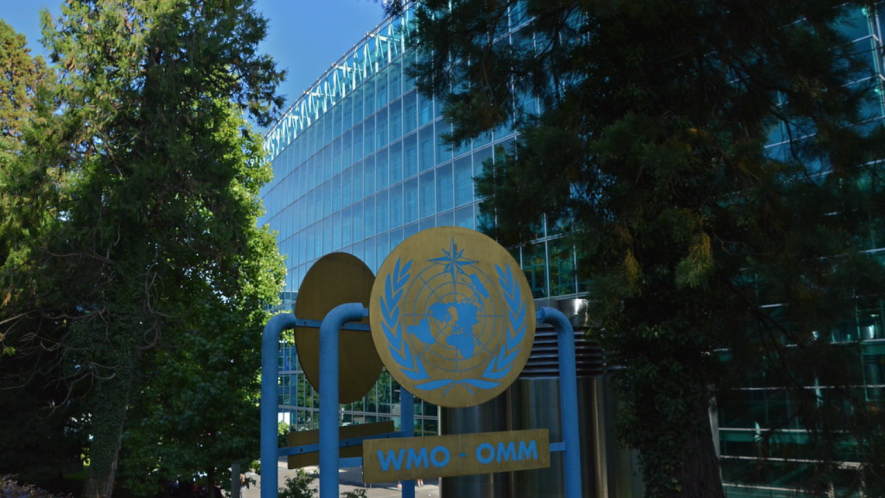Climate Change: WMO's Report Confirms 2023 Was Hottest Year

Image Courtesy: Flickr
Patna: It is official now, 2023 was hottest year on record. This has been confirmed by a new report by the World Meteorological Organisation (WMO).
The WMO State of the Global Climate 2023 report confirmed that 2023 was the warmest year on record, with the global average near-surface temperature at 1.45 °Celsius (with a margin of uncertainty of ± 0.12 °C) above the pre-industrial baseline. It was the warmest 10-year period on record.
"Never have we been so close – albeit on a temporary basis at the moment – to the 1.5° C lower limit of the Paris Agreement on climate change.” said WMO Secretary-General Celeste Saulo in a statement. “The WMO community is sounding the Red Alert to the world,” she added.
“Climate change is about much more than temperatures. What we witnessed in 2023, especially with the unprecedented ocean warmth, glacier retreat and Antarctic sea ice loss, is cause for particular concern,” she said.
Saulo further said "The climate crisis is THE defining challenge that humanity faces and is closely intertwined with the inequality crisis – as witnessed by growing food insecurity and population displacement, and biodiversity loss”.
None other than United Nations Secretary-General Antonio Guterres in a statement has expressed concern over it. "Sirens are blaring across all major indicators... Some records aren’t just chart-topping, they’re chart-busting. And changes are speeding-up.” he said.
The report highlights that the observed concentrations of the three main greenhouse gases – carbon dioxide, methane, and nitrous oxide – reached record levels in 2022. Real-time data from specific locations show a continued increase in 2023.The CO2 levels are 50% higher than the pre-industrial era, trapping heat in the atmosphere. The long lifetime of CO2 means that temperatures will continue to rise for many years to come.
The WMO report said the global mean near-surface temperature in 2023 was 1.45 ± 0.12 °C above the pre-industrial 1850–1900 average. So, 2023 was the warmest year in the 174-year observational record. This has shattered the record of the previous warmest years, 2016 at 1.29 ± 0.12 °C above the 1850–1900 average and 2020 at 1.27±0.13 °C.
The 10-year average 2014–2023 global temperature is 1.20±0.12°C above the 1850–1900 average.
Globally, every month from June to December was record warm for the respective month. September 2023 was particularly noteworthy, surpassing the previous global record for September by a wide margin (0.46 to 0.54 °C), the report said.
The long-term increase in global temperature is due to increased concentrations of greenhouse gases in the atmosphere. The shift from La Niña to El Niño conditions in the middle of 2023 contributed to the rapid rise in temperature from 2022 to 2023.
Global average sea-surface temperatures (SSTs) were at a record high April onward, with the records in July, August and September broken by a particularly wide margin. Exceptional warmth was recorded in the eastern North Atlantic, the Gulf of Mexico and the Caribbean, the North Pacific and large areas of the Southern Ocean, with widespread marine heatwaves.
Some areas of unusual warming such as the Northeast Atlantic do not correspond to typical patterns of warming associated with El Niño, which was visibly present in the Tropical Pacific, the report added.
The WMO report shows that records were once again broken, and in some cases smashed, for greenhouse gas levels, surface temperatures, ocean heat and acidification, sea level rise, Antarctic sea ice cover and glacier retreat.
According to the report, heatwaves, floods, droughts, wildfires and rapidly intensifying tropical cyclones caused misery and mayhem, upending every-day life for millions and inflicting many billions of dollars in economic losses.
On an average day in 2023, nearly one-third of the global ocean was gripped by a marine heatwave, harming vital ecosystems and food systems. Toward the end of 2023, over 90% of the ocean had experienced heatwave conditions at some point during the year, it said.
The global set of reference glaciers suffered the largest loss of ice on record (since 1950), driven by extreme melt in both western North America and Europe, according to preliminary data.
The WMO report also revealed that the number of people who are acutely food insecure worldwide had more than doubled, from 149 million people before the COVID-19 pandemic to 333 million people in 2023 (in 78 monitored countries by the World Food Programme). Weather and climate extremes may not be the root cause, but they were aggravating factors, it said.
The report further said weather hazards continued to trigger displacement in 2023, showing how climate shocks undermine resilience and create new protection risks among the most vulnerable populations.
However, the WMO report pointed out that there is a glimmer of hope.
Renewable energy generation, primarily driven by the dynamic forces of solar radiation, wind and the water cycle, has surged to the forefront of climate action for its potential to achieve decarbonization targets. In 2023, renewable capacity additions increased by almost 50% from 2022, for a total of 510 gigawatts (GW) – the highest rate observed in the past two decades.
This week, at the Copenhagen Climate Ministerial on March 21-23, climate leaders and ministers from around the world will gather for the first time since COP28 in Dubai to push for accelerated climate action. Enhancing countries’ Nationally Determined Contributions (NDCs) ahead of the February 2025 deadline, will be high on the agenda, as will delivering an ambitious agreement on financing at COP29 to turn national plans into action.
"Climate Action is currently being hampered by a lack of capacity to deliver and use climate services to inform national mitigation and adaptation plans, especially in developing countries. We need to increase support for National Meteorological and Hydrological Services to be able to provide information services to ensure the next generation of Nationally Determined Contributions are based on science", said Saulo.
The State of the Global Climate report was released in time for World Meteorological Day on March 23. It also sets the scene for a new climate action campaign by the UN Development Programme and WMO to be launched on March 21, and will pave the way for informed discussions at a climate ministerial meeting in Copenhagen on March 21-22.
Get the latest reports & analysis with people's perspective on Protests, movements & deep analytical videos, discussions of the current affairs in your Telegram app. Subscribe to NewsClick's Telegram channel & get Real-Time updates on stories, as they get published on our website.
























